There is substantial variability in the presentation of autistic children and the challenges they face. Hence, a wide array of interventions are in place to help these individuals. At Mathavam, interventions are tailored to fit into the needs of each and every child. The therapies employed at Mathavam include behaviour therapy, play-based therapy, speech and language therapy, occupational therapy, physical therapy, music therapy, and sensory integration therapy.
When a child arrives at the centre, a thorough assessment is conducted as the first step. At present the Childhood Autism Rating Scale (CARS) is used to determine the severity of the condition. Following this, the child undergoes further evaluation by a multidisciplinary team of professionals, who collaboratively assess the child’s strengths and challenges. Based on these comprehensive assessments, specific, individualised goals are set to address the child’s unique needs. Parents are actively involved throughout the process, with their insights incorporated into the goal-setting and therapy sessions, ensuring a holistic and supportive approach to the child’s development.
Behaviour Therapy
At the centre, a child undergoes comprehensive behavioural assessments to thoroughly understand their unique behavioural patterns and developmental needs. This in-depth evaluation forms the foundation for individualised goal setting, ensuring that each child’s intervention plan is meaningful and targeted. Based on these personalised goals, a tailored behaviour therapy plan is created. The centre primarily utilises evidence-
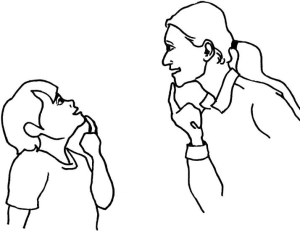 based techniques such as Early Intensive Behavioural Intervention (EIBI) and Applied Behaviour Analysis (ABA) to support positive behavioural change
based techniques such as Early Intensive Behavioural Intervention (EIBI) and Applied Behaviour Analysis (ABA) to support positive behavioural change
and developmental progress.
Applied Behaviour Analysis (ABA) is a widely used, evidence-based approach for supporting children with Autism Spectrum Disorder (ASD)
by addressing challenging behaviours and promoting skill development. A fundamental
part of ABA is assessing the child’s behaviours through the Antecedent-Behaviour-Consequence (ABC) chart, which
helps identify triggers and consequences influencing their actions. One of the primary goals of ABA is to encourage appropriate behaviours, such as making a child sit, which is crucial for structured learning. Techniques like Discrete Trial Intervention (DTI) are often used to teach specific skills by breaking them down into smaller, manageable steps, followed by immediate reinforcement to encourage desired behaviours. Reinforcement, whether positive (e.g., rewards) or negative (e.g., removing an aversive stimulus), plays a key role in strengthening positive behaviours. Additionally, prompting and fading strategies ensure that children receive the necessary support to learn new tasks, gradually reducing assistance as they gain independence. Natural Environment Teaching (NET) further enhances learning by incorporating teaching moments into real-life situations, making skills more meaningful and generalisable.
The structured nature of ABA allows children to develop essential communication skills, such as using words or gestures to express needs. Social skills, like maintaining eye contact, taking turns in conversation, and playing cooperatively with peers, are also targeted. Social stories are another powerful tool used within ABA to support social and behavioural learning. These are short, personalised narratives that describe specific social situations and appropriate responses, helping children understand expectations, routines, and the perspectives of others. By providing clear examples in a simple, visual format, social stories can reduce anxiety and increase successful participation in social interactions and daily activities.
Moreover, ABA promotes independence by teaching self-care routines, such as dressing, brushing teeth, and using the toilet. As children master these skills, they gain confidence and become more self-sufficient. Additionally, ABA helps reduce disruptive behaviours, such as aggression or self-injury, by teaching alternative ways to communicate frustration or discomfort.
Early Intensive Behavioural Intervention (EIBI) is a structured, evidence-based therapy designed for young children with Autism Spectrum Disorder (ASD), typically under the age of five. Rooted in the principles of Applied Behaviour Analysis (ABA), EIBI
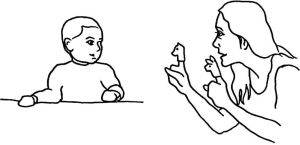 focuses on improving core areas such as communication, social interaction,
focuses on improving core areas such as communication, social interaction,
and adaptive behaviour. The intervention is highly individualised, intensive (often 20–40 hours per week), and delivered in
a one-on-one setting by trained therapists at the centre.
It emphasises positive reinforcement to
encourage desired behaviours while reducing problematic
ones. Research has shown that EIBI can lead to significant improvements in cognitive, language, and daily living skills when initiated early.
Play-Based Therapy
Play-based therapy is a therapeutic approach that utilises play as a medium for children to express their emotions, process experiences, and resolve psychological challenges in a safe and supportive environment. This method acknowledges the natural way children communicate through play, allowing them to explore their thoughts, feelings, and behaviours in a comfortable and engaging setting.
At the centre, children participate in play activities that align with their interests, enabling them to express themselves freely. By engaging in enjoyable and meaningful play, they can transition from unwanted behaviours to more appropriate and non-injurious forms of self-expression. This therapeutic process not only enhances emotional regulation
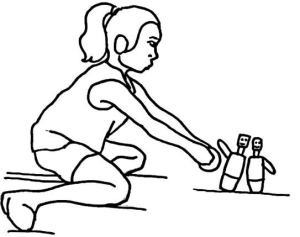 but also promotes cognitive, motor, and sensory development. Through structured and free play, children can strengthen their problem-solving abilities, improve communication skills, and develop better coping mechanisms, all
but also promotes cognitive, motor, and sensory development. Through structured and free play, children can strengthen their problem-solving abilities, improve communication skills, and develop better coping mechanisms, all
while having fun.
more effectively.
A crucial aspect of play-based therapy is the involvement of parents. Parents are incorporated into therapy sessions, and they gain a deeper understanding of their child’s needs and learn
strategies to reinforce therapeutic play at home. This consistency between the therapy setting and the home environment helps children generalise newly learnt skills and behaviours
Through pretend play and role-playing, children explore social interactions and practice appropriate responses in a stress-free way. This method is particularly beneficial for children with social communication difficulties, as it allows them to engage with different scenarios in a safe and guided environment.
Speech and Language Therapy
Speech therapy plays a crucial role in improving communication skills for children with autism. At Mathavam, the child undergoes speech, language, social skills, and cognitive abilities to create a personalised therapy plan.
Therapy sessions target various aspects, including speech production, vocabulary development, sentence formation, and pragmatic language skills. Since social communication can be challenging for children with autism, the centre focuses on teaching them how to initiate and maintain conversations, understand social cues, and use language appropriately. Play-based therapy helps encourage spontaneous speech and interaction in a fun and engaging manner.
For non-verbal children, Augmentative and Alternative Communication (AAC) tools such as Picture Exchange Communication Systems (PECS) or speech-generating devices are introduced, enabling them to express their thoughts effectively.
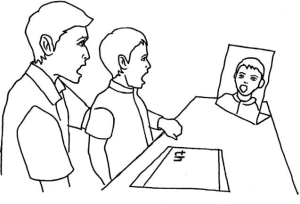 The outcomes of speech therapy can be transformative. Many
The outcomes of speech therapy can be transformative. Many
children improve their verbal and non- verbal communication, develop better social interaction skills, gain confidence, and enhance their overall quality of life, including academic performance
and emotional regulation.
Early intervention is critical, as research shows that starting therapy at
a young age significantly improves long- term communication skills. Witnessing children
achieve milestones, whether it’s saying their first word, engaging in a conversation, or confidently interacting with others, is incredibly rewarding. By working closely with families and a dedicated team, we strive to support children with autism in their journey toward better communication and social integration.
Occupational Therapy
At Mathavam, our occupational therapy (OT) programme is dedicated to supporting children with Autism Spectrum Disorder (ASD) by enhancing their ability to participate in daily life activities. The centre focuses on sensory integration therapy to help children regulate responses to sensory stimuli, addressing challenges related to tactile, auditory, visual, oral, and vestibular inputs.
Many children with autism struggle with self-care tasks such as dressing, grooming, feeding, and toileting, so the children are provided with structured interventions to improve independence in activities of daily living (ADLs). Fine motor difficulties, including challenges with handwriting, buttoning clothes, and using utensils, are addressed through exercises that strengthen hand muscles, coordination, and grip. Additionally,
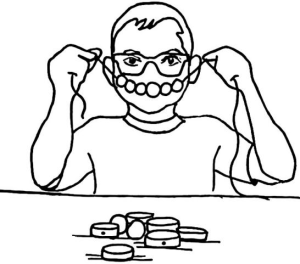 the children are trained in such a way as to develop social and play skills, guiding children through structured activities that encourage turn-taking, communication, and imaginative play. Emotional regulation and behaviour management are also key areas of focus in supporting children in recognising
the children are trained in such a way as to develop social and play skills, guiding children through structured activities that encourage turn-taking, communication, and imaginative play. Emotional regulation and behaviour management are also key areas of focus in supporting children in recognising
and managing their emotions to reduce anxiety, meltdowns, and aggressive behaviours.
Through individualised interventions, Mathavam empowers children to navigate daily life with greater confidence and independence. Our goal at Mathavam is
to provide holistic, child-centred occupational therapy that enables children with autism to reach their full potential, improving their overall quality of life.
Physical Therapy
Physical therapy has emerged as a crucial intervention for children with Autism Spectrum Disorder (ASD), addressing their motor skills, fine motor skills, coordination, balance and sensory needs. At Mathavam, physical therapy is systematically integrated into autism intervention programmes to enhance the functional abilities and quality of life of the children.
The intervention process begins with a comprehensive assessment of the child’s motor skills, including fine motor coordination, balance, and overall physical abilities. Based on these findings, individualised goals are set, and a tailored intervention plan is developed, considering the child’s sensory requirements. Parents are actively involved in the process, and they receive education and demonstrations on the intervention plan and are encouraged to train their children within a set period. During follow-up visits, the child’s progress is reassessed, and goals are adjusted accordingly to ensure continuous improvement.
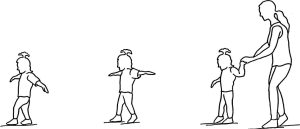 One of the key advancements at Mathavam is the integration of a structured physical activity programme as a routine therapy. This program is evidence-based,
One of the key advancements at Mathavam is the integration of a structured physical activity programme as a routine therapy. This program is evidence-based,
Physical therapy interventions, particularly structured physical activity, play a vital role in promoting overall well-being and functional independence in children with autism. By combining scientific research with individualised care, Mathavam continues to make a meaningful impact in child developmental rehabilitation.
Another achievement is that our children are now receiving table tennis training from professional coaches at the Northern Sports Academy. An exceptional steps that over children have been provided with such training, opening new opportunities for their physical and social development.
Integrated Music Model
Music as a medium to communicate with the autistic children is currently viewed as a feasible, pleasant experience which could enable improvement in behavioural and cognitive domains. It is believed that ambient music, a form of passive music intervention, sets a low-stress environment for the autistic children by reducing distractors. We, at Mathavam, have designed a model where South Indian classical music is integrated into the routine therapies and free play for autistic children.
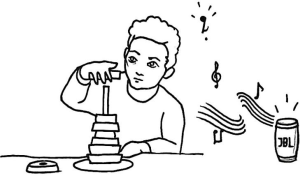 The children are included in the model after a comprehensive assessment to understand
The children are included in the model after a comprehensive assessment to understand
their auditory responses. Based on their response, the pieces are selected and
used during the routine therapy session or free play. The current model is designed in a way that each session with music lasts for
30 mins, preferably two sessions a day. The duration, selection of music, structure of the session
and targets are modified to suit each child based on the inputs from the parents and the behavioural therapists involved. Parents are actively encouraged to continue the sessions at home and to record their observations. Children are followed up on a regular basis to reassess their improvement, and modifications are made based on the behavioural outcomes and feedback from the parents and behavioural therapists.
The current model that is implemented is mainly a passive form of music therapy. But there are instances where certain children have been encouraged to actively participate in music education. Preliminary analysis of the behavioural scores have shown marked improvements in the children who have been included in this model. Parental perception and satisfaction have also been remarkably good after their involvement in this model.
Mathavam has become one of the pioneers in Sri Lanka which has incorporated music into the routine therapy sessions for autistic children, which continues to improve the wellbeing of both the children and the carers.
Sensory Integration Therapy
At the centre, sensory integration therapy is thoughtfully incorporated into daily therapeutic routines. Therapists use structured play activities designed to stimulate and organise the child’s sensory system.
Children engage in tasks involving tactile (e.g., sand play, textured materials), vestibular (e.g., swings, balance boards), and proprioceptive input (e.g., jumping, pushing, or carrying weighted objects). These activities are tailored to each child’s sensory needs, helping them process sensory information more effectively. Calming tools like weighted blankets, noise-cancelling headphones, or sensory rooms are also used to manage overstimulation. Therapists closely observe the
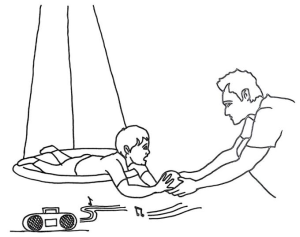 child’s responses and gradually increase the complexity of tasks, supporting the development of self-regulation
child’s responses and gradually increase the complexity of tasks, supporting the development of self-regulation
and adaptive responses. Parent training and home programmes are often included to reinforce consistency.
The above descriptions are some of the important therapeutic activities the Mathvam provides to its children. There are many more that also include the need of the parents, including education, hands- on training, supportive counselling
and psychosocial interventions. The
centre’s collaborative approach, involving both multidisciplinary professionals and parents, plays a pivotal role in creating a supportive environment for the child’s growth. Through structured, evidence-based interventions and the use of creative methods, Mathavam helps children enhance their communication, social skills, and overall well-being. The success of these programs is a testament to the centre’s commitment to improving the quality of life for children with ASD and their families, fostering long-term development and empowerment.
Ms Sabarththiny Sivapalan
Physiotherapist
Mathavam